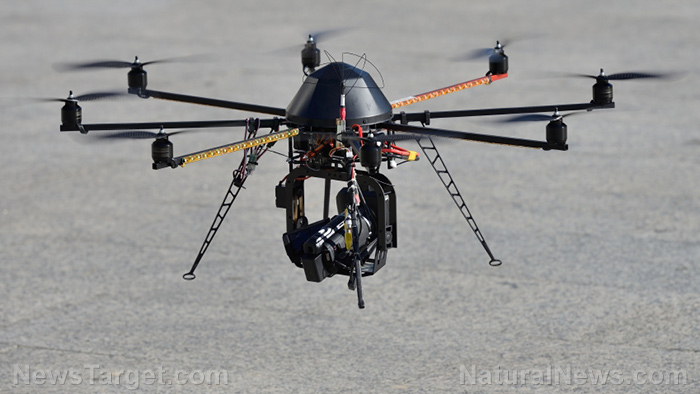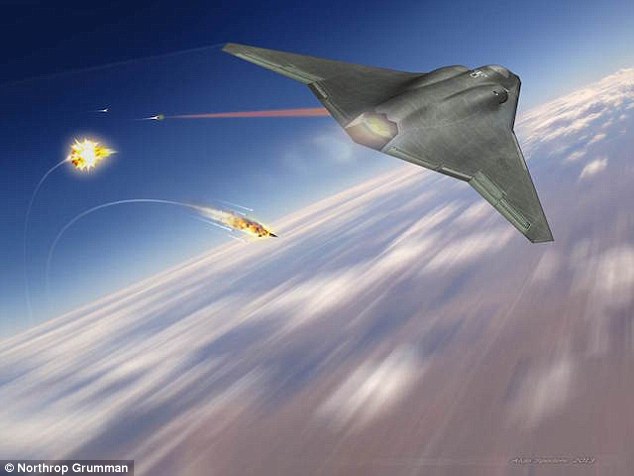OUTRAGE: Drone strikes miss their target more than 90 percent of the time
10/19/2015 / By Julie Wilson

The Intercept has published what may be some of the most important documents released since hero Edward Snowden exposed the U.S. government’s overly intrusive and illegal surveillance of the American people via the National Security Administration (NSA) in 2013.
Now, another whistleblower with deep ties to the intelligence community who worked with the U.S. government’s drone program has come forward exposing how the U.S. military routinely assassinates targets in Afghanistan, Somalia and Yemen.
Coined The Drone Papers, The Intercept’s 10-part series discloses a “cache of secret documents detailing the inner workings of the U.S. military’s assassination program…”
Since the 9/11 attacks on the U.S. World Trade Center buildings in 2001, the government, beginning under George W. Bush and continuing under President Obama, have launched a 15-year covert war in the Middle East using drones to sentence their targets to death while ignoring America’s “established checks and balances of arrest, trial, and appeal.”
The U.S. government’s process for identifying, authorization and carrying out lethal drone strikes against supposed “imminent threats” to the U.S. overseas has long been highly secretive and largely lacking in oversight as the White House only recently created a set of standards and procedures for conducting drone strikes.
The guidelines offer “little specificity” as to how the U.S. government actually manages their drone program, sending a surreptitious message from the Obama administration that such operations are “one of trust, but don’t verify,” reports The Intercept’s renowned war reporter Jeremy Scahill, who authored two books Blackwater: The Rise and Fall of the World’s Most Powerful Mercenary Army and Dirty Wars: The World Is A Battlefield.
The Drone Papers document ‘key time in the evolution of the drone wars – 2011 to 2013’
The source responsible for providing The Intercept with documents outlining details about the U.S. drone program asked to remain anonymous due to the sensitive nature of the classified materials and the government’s history of aggressively prosecuting whistleblowers.
The source told The Intercept he released the documents “because he believes the public has a right to understand the process by which people are placed on kill lists and ultimately assassinated on orders from the highest echelons of the U.S. government.”
“This outrageous explosion of watchlisting — of monitoring people and racking and stacking them on lists, assigning them numbers, assigning them ‘baseball cards,’ assigning them death sentences without notice, on a worldwide battlefield — it was, from the very first instance, wrong,” the source said.
‘Normalization of assassination is central component of US counterterrorism policy’
A 2013 study completed by a Pentagon entity, the Intelligence, Surveillance, and Reconnaissance Task Force (ISR) highlights “the limitations of the drone program,” calling for “more advanced drones and other surveillance aircraft” that have a greater surveillance reach necessary for targeted strikes. It also recommends capturing and interrogating more suspected terrorists rather than annihilating them in drone strikes, which eliminates intelligence gathering, The Intercept reports.
“The ISR study also reveals new details about the case of a British citizen, Bilal el-Berjawi, who was stripped of his citizenship before being killed in a U.S. drone strike in 2012. British and American intelligence had Berjawi under surveillance for several years as he traveled back and forth between the U.K. and East Africa, yet did not capture him. Instead, the U.S. hunted him down and killed him in Somalia.”
Other documents detail “a special operations campaign in northeastern Afghanistan, Operation Haymaker,” showing that more than 200 people were killed via U.S. airstrikes between January 2012 and February 2013. Only 35 of the 200 were intended targets.
These revelations closely follow outrage that was ignited after the U.S. government launched an airstrike attack against the western-run Doctors Without Borders hospital in Kunduz, Afghanistan, killing 22 patients and medical staff including three children.
While that airstrike was likely intentional, The Drone Papers further reveal how faulty the U.S. military’s intelligence can be, resulting in the deaths of innocent civilians.
The new documents show that during one five-month period of Operation Haymaker, “nearly 90 percent of the people killed in airstrikes were not the intended targets.
“In Yemen and Somalia, where the U.S. has far more limited intelligence capabilities to confirm the people killed are the intended targets, the equivalent ratios may well be much worse.”
Additional sources:
Tagged Under: airstrikes, CIA, drones, Edward Snowden, NSA, surveillance, terrorism, War



















